Rear I/O
The rear I/Os are pretty much identical - in fact, it's very hard to differentiate between them: the slightly larger heatsink is the DS4 though.- PS2 keyboard and mouse
- Optical and RCA digital S/PDIF
- One 6-pin Firewire socket
- Backlit Clear CMOS button
- Eight USB 2.0 ports
- RJ45 Gigabit Ethernet socket
- Six 3.5mm audio jacks supporting 7.1 channel surround sound, in addition to line-in and microphone inputs.
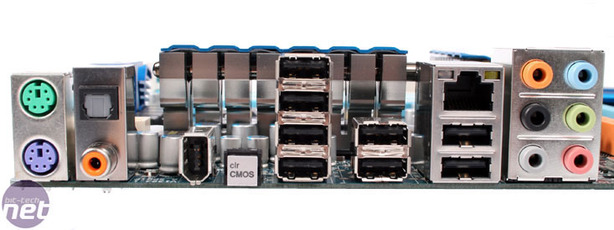
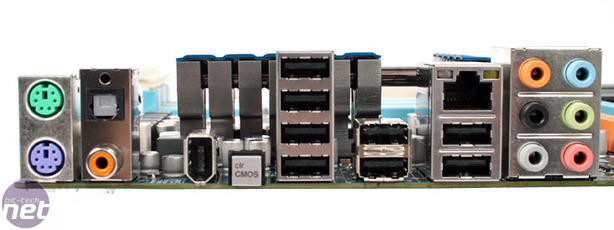
Top: EX58-DS4, Bottom: EX58-UD4P
BIOS
Gigabyte's BIOS is different to what we're used to. It's great and intuitive in some respects - everything is basically where we're used to it with the important (overclocking/power user) parts in Gigabyte's M.I.T. section. It's this section that has seen the most change, but unfortunately not all of it is for the better in our opinion.
The multiplier/CPU clock frequency display, the QPI link speed, the memory and base clock frequency adjustments: all of this is great because it's really simple to use and understand. Gigabyte still includes the "performance enhance" function and if you can, tweak it to Extreme like usual, but we don't have the Graphics Booster option any more - this has finally been dropped.
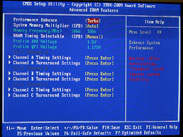
 There are lots of sub directories, and it does get a little confusing but we can understand why Gigabyte has separated the CPU features (power saving, virtualisation etc), Uncore and QPI and Advanced Clock Control (not to be confused with AMD's ACC) into separate options and hidden away, because they don't often need to be adjusted, or they only need to be fiddled with if you're a bit more hardcore.
There are lots of sub directories, and it does get a little confusing but we can understand why Gigabyte has separated the CPU features (power saving, virtualisation etc), Uncore and QPI and Advanced Clock Control (not to be confused with AMD's ACC) into separate options and hidden away, because they don't often need to be adjusted, or they only need to be fiddled with if you're a bit more hardcore. It's the custom memory timing settings that become a complete pain in the backside though: instead of just having one set of five major options to address, there are now three. While Gigabyte is simply pandering to Intel's option of allowing independent memory configurations per channel, matched sticks will aid overclocking and virtually everyone will be setting uniform timings across the three. It makes the page unnecessarily huge and also means there are six more sets of advanced timings in further sub-sub directories that end up making a usually enjoyable task one to avoid.
The four major voltage controls now sit down the bottom, and like usual Gigabyte includes a great ease of use factor where you can type in the required value and it offers up a list of options that are equal to or close to it. It's far, far better than having to wait while it scrolls through a million voltage options. The one downside is that if a value is entered that doesn't correspond precisely to the available options the highest possible voltage is selected instead! This has been a problem since the EP45 boards were introduced last year and we're still surprised that this potentially dangerous bug hasn't been fixed.
In yet another sub-menu there are plenty more voltage options for everything needed and Gigabyte has even mirrored the options from the menu above into the one below too, in order to avoid constant flicking back and forth. Just before exiting the BIOS, Gigabyte does however pop up a nice red warning box to highlight potentially damaging voltage changes, prompting a worthy double check if you are unsure.
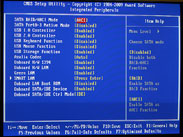
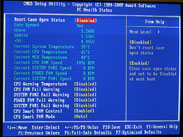 Other funky Gigabyte features include the "Green LAN" option that disables the network socket and chip when it doesn't detect a connection, saving a watt or two of power. The High Performance Event Timer, or HPET, that's key to clock accuracy Core i7 systems is thankfully on by default - unlike what we've seen from MSI and Asus - and it even has a specific (32 or) "64-bit Mode."
Other funky Gigabyte features include the "Green LAN" option that disables the network socket and chip when it doesn't detect a connection, saving a watt or two of power. The High Performance Event Timer, or HPET, that's key to clock accuracy Core i7 systems is thankfully on by default - unlike what we've seen from MSI and Asus - and it even has a specific (32 or) "64-bit Mode."Gigabyte monitors the usual temperatures, however it still lacks a proper fan control mechanism outside of a very basic pair of "PWM" or "Voltage" options and only offers it for the CPU and none of the other fan placements. Disappointing.
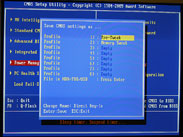
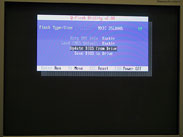 As usual we highly recommend using the in-BIOS Q-Flash utility for upgrading the motherboard firmware - we've found works great and both boards have a second BIOS should things take a turn for the worse (we've needed it a couple of times before on other Gigabyte boards).
As usual we highly recommend using the in-BIOS Q-Flash utility for upgrading the motherboard firmware - we've found works great and both boards have a second BIOS should things take a turn for the worse (we've needed it a couple of times before on other Gigabyte boards). Finally, and just as importantly, Gigabyte has updated its profile saving utility to reduce the number of save slots from twelve to a still ample eight (in contrast, Asus still only offers two and DFI four), while also allowing naming and loading new ones from USB stick or hard drive too!
This means that your profiles can be shared across the 'net with like-minded enthusiasts who also have the same board, enabling them to learn new settings. This idea has worked great on DFI's P45 boards when we tried its similar solution (although it's wholly Windows based). However, Gigabyte doesn't really have quite the same community because this was it, and there are no profiles to try out in sight here or on the official EU and TW websites.

MSI MPG Velox 100R Chassis Review
October 14 2021 | 15:04


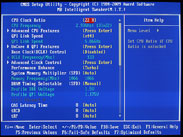

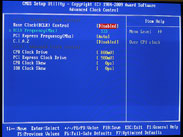
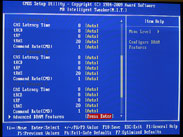







Want to comment? Please log in.